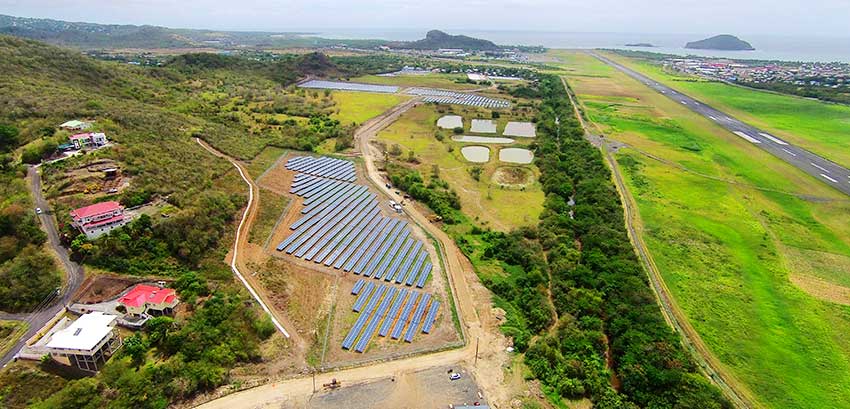SAINT LUCIA has long been in search of ways and means to tap renewable energy sources to reduce and hopefully eventually eliminate our near-total dependence on fossil fuels.
We’ve (like forever) been trying to lock our geothermal energy into the national grid from Soufriere; we recently tried something with wind energy on the East Coast; we even tried to generate waste into energy from the Deglos dump. Now, we have our first solar power farm at La Tourney.
The solar farm opened by ex-US President Bill Clinton in Vieux Fort Thursday is a major step in the right direction.
The island’s first utility-scale renewable energy project comprises nearly 15,000 solar panels and will generate approximately 7 million units of electricity per year.
LUCELEC uses approximately 20 million gallons of fuel per year. The farm started feeding into the national grid in April and already meets about 5% of the island’s electricity demand. The company projects it will reduce the volume of fuel purchased by about 300 thousand gallons per year.
Saint Lucia is perhaps the only CARICOM country where electricity consumers have to pay the utility company’s fuel bill, which is also an essential factor in LUCELEC’s annual performance.
The company has often stated it approaches fuel purchases with savings in mind. But while rates may vary monthly, customers are still burdened with an added monthly fuel surcharge they continue to dream they could wish away.
LUCELEC is no longer a majority Saint Lucian-owned company, but it’s one of the best-run in the entire Caribbean. As a private company providing an essential public service, it’s also the sole entity legally empowered to generate and sell electricity here. The company will therefore ultimately be the sole determinant of the pace of the island’s race to tap renewable energy and reduce dependence on fossil fuels.
Like everything else, renewable energy also comes at a cost, the wind farm already costing $20 million, which shareholders will naturally be eager to see the company recover – and with profit.
It’s still too early to tell just how much our transition toward renewable energy will translate into measurable and progressive reduction and eventual elimination of the fuel surcharge.
But it’s not too late to reiterate that electricity consumers will always measure the benefit of renewal energy not just on its availability, but mainly on its effect on the cost they pay for power.















